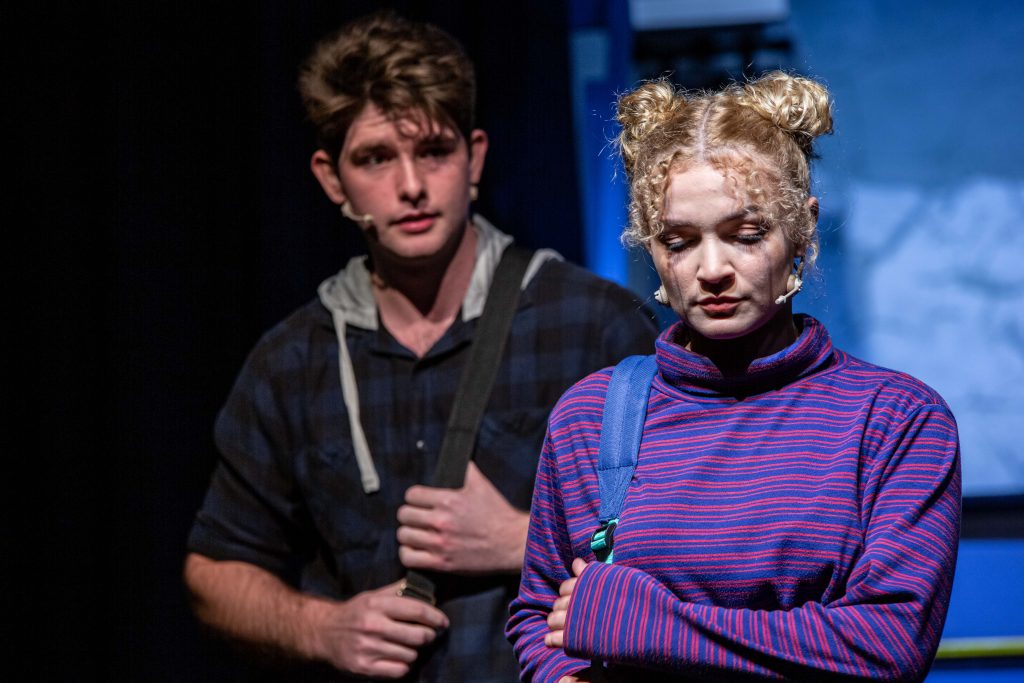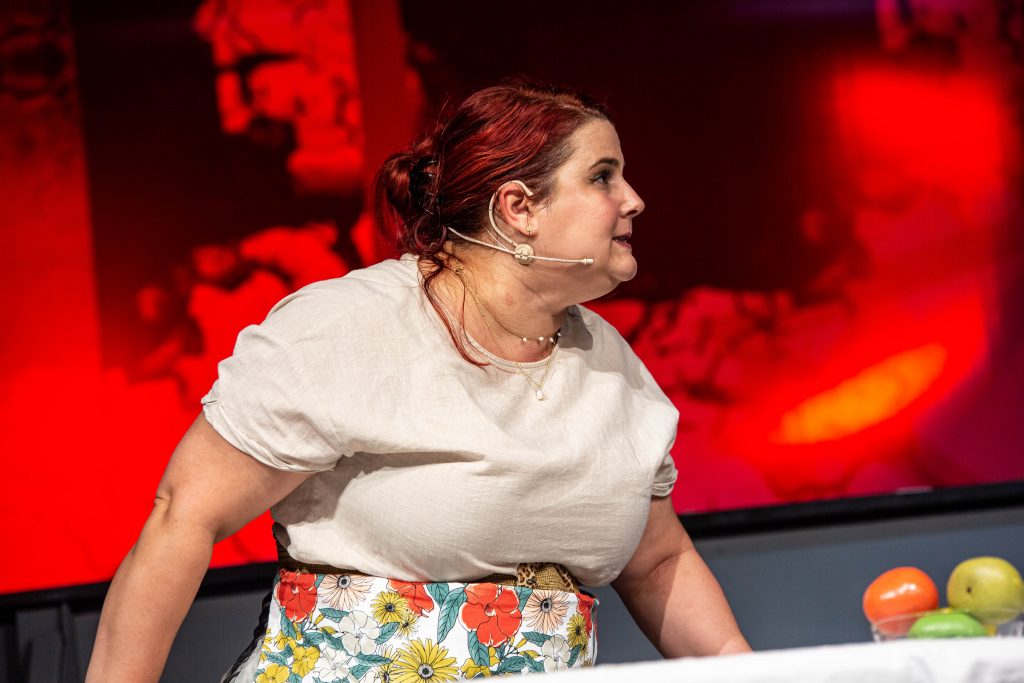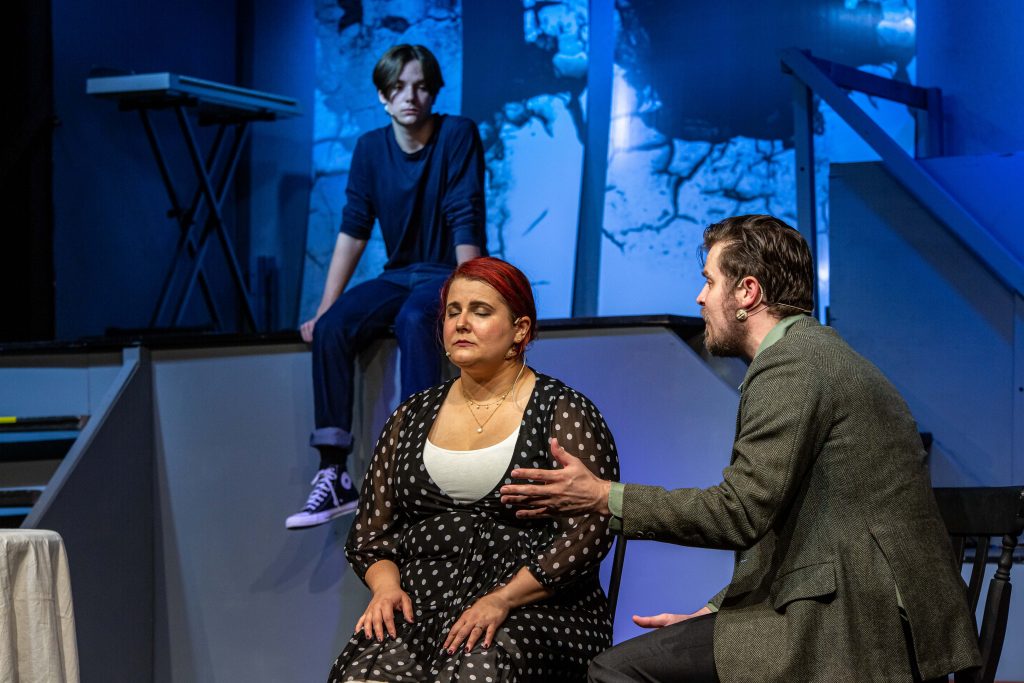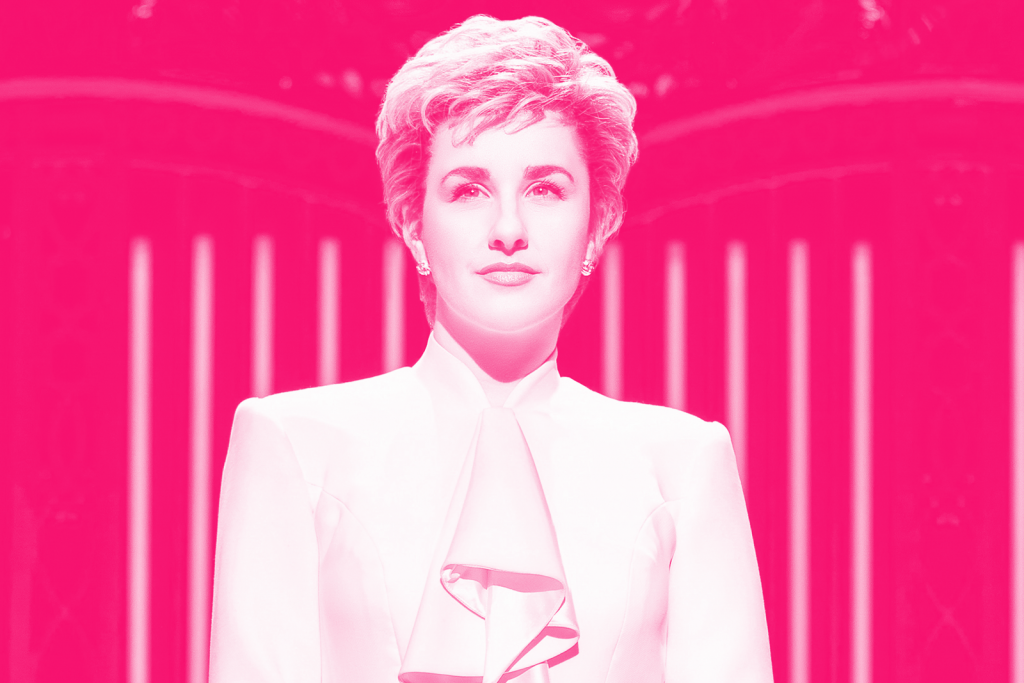
‘Next to Normal’ // Redcliffe Musical Theatre
‘Next to Normal’ was tempestuous.
Emotions are powerful things. Even though we all know the sting of anger, sadness, or jealousy, these feelings are important as they allow us to appreciate the times when we feel absolute joy. But what happens when our emotions get too much? Redcliffe Musical Theatre poses some difficult questions to the audience in its latest musical production, ‘Next to Normal’.
Staged within the relaxed, cabaret-esque Theatre 102, ‘Next to Normal’ invites audiences into a story as intimate as its location. Penned by musician Tom Kitt and lyricist Brian Yorkey (who would later go on to develop the Netflix drama ‘13 Reasons Why’), the musical tells the story of Diana Goodman, a mother with bipolar disorder, as well as her family who try to support her.
Originating off-Broadway in 2008, the show transferred to Broadway a year later. Its effective storytelling and personal story earned it three awards at the 63rd Tony Awards After its two-year Broadway run, the musical received success through numerous international performances, including last year’s National Institute of the Dramatic Arts production in Sydney.
‘Next to Normal’ marks Zachary Crisan’s sophomore directorial effort with Redcliffe Musical Theatre after 2020’s ‘Lord of the Flies’. Flexing his musical muscles, Crisan demonstrates a keen eye for the drama of everyday suburban life. Crisan successfully blends the gritty, raw subject matter with nuanced storytelling. He establishes a deft atmosphere of tragic realism, which does not relinquish its grip from the audience’s heartstrings for the show’s entirety.
As well as directing, Crisan boasts co-lighting design credits with technical manager, Jonathan Moss. Crisan and Moss drench the stage in purposeful colours – blues and reds. Their use of lighting expertly compliments Diana’s inner conflict. Strobe effects are equally used with skill, providing one particularly harrowing scene with an additional layer of distortion. The visual interplay of Moss and Crisan’s lighting with Julie Whiting’s musical direction and Andrew Hazzard’s sound design provides audiences with a measured understanding of Diana’s state of mind. This results in an artfully crafted, all-encompassing sensory experience.
Adding to the corporeal atmosphere is Jonathan Johns’ set design. Johns’ design is in keeping with Theatre 102’s usual minimalist aesthetic. A dining table sits in pride of place at the front of the stage – a simple reminder of the family moments that take place there every day. This, accompanied by a clothes rack and keyboard, remain the sole set pieces throughout the performance. By limiting the objects, Johns draws the audience’s attention instead to the stage itself. Painted in white with stylised black inkblots (a subtle nod to psychology’s Rorschach test), the set itself reads like a representation of Diana’s mind – reserved yet spirited.
Costume and properties manager Sarah Hunt alludes to the passage of time through subtle changes in the performer’s clothing – particularly the female characters. As Diana begins to embrace some semblance of independence, her wardrobe transitions from flowing skirts to jeans and tops. This is in opposition to her daughter Natalie, who begins to adorn more feminine dresses than at the show’s commencement. Diana’s husband Dan progressively strips to a shirt and jeans, hinting at the slow tearing down of his self-preservative mentality. Hunt’s costume design is both considered and nuanced. It subtly reinforces each character’s development throughout the performance, allowing for an added layer of psychological analysis.
Each of the six performers make use of Theatre 102’s space proficiently. Choreographer Felicity O’Leary positions the majority of the action on the stage floor, affording audiences a shared sense of claustrophobic intimacy, much like what Diana endures. The key exception is reserved for Diana’s daughter Natalie and her beau Henry – much of their storyline takes place on the structure at the rear of the stage. This is a clever move by O’Leary to reaffirm Natalie’s sense of mental superiority above her parents. Also, in occasionally bringing Diana and Dan up onto the platform, O’Leary delicately hints at the highs and lows associated with bipolar disorder for all affected by it.
‘Next to Normal’ boasts a talented cast of southeast Queensland performers. Helmed by a heartbreakingly poignant performance by Samara Marinelli as Diana, each member of the six-strong cast brings care and consideration to their roles. This is no more evident than through their vocal harmonies, which are resolutely orchestrated under Whiting’s guidance. Nathaniel Currie and Isabel Davies radiate as Dan and Natalie Goodman, respectively. Elliot Gough’s Henry and Michael Mills’ Drs Madden and Fine, each bring understated levity to their roles. Kyle Armstrong, in his first production with Redcliffe Musical Theatre, delivers a standout performance as the mysteriously elusive Gabe. Each performer exudes chemistry, both independently and together, resulting in a tight, close-knit onstage family.
‘Next to Normal’ offers up a rollercoaster of emotion. Without losing sight of Diana’s intimate story at its heart, the production is a feast of clever technical collaboration. A simultaneously draining and emphatic ride, ‘Next to Normal’ invites its audience to start a meaningful dialogue about mental illness with their loved ones. For this alone, Redcliffe Musical Theatre should feel proud.
‘Next to Normal’ performs until Sunday, 30 May 2021 at Theatre 102, Redcliffe. For more information, or to purchase tickets, visit Redcliffe Musical Theatre’s website.
Photos by BEAK Photographics.









